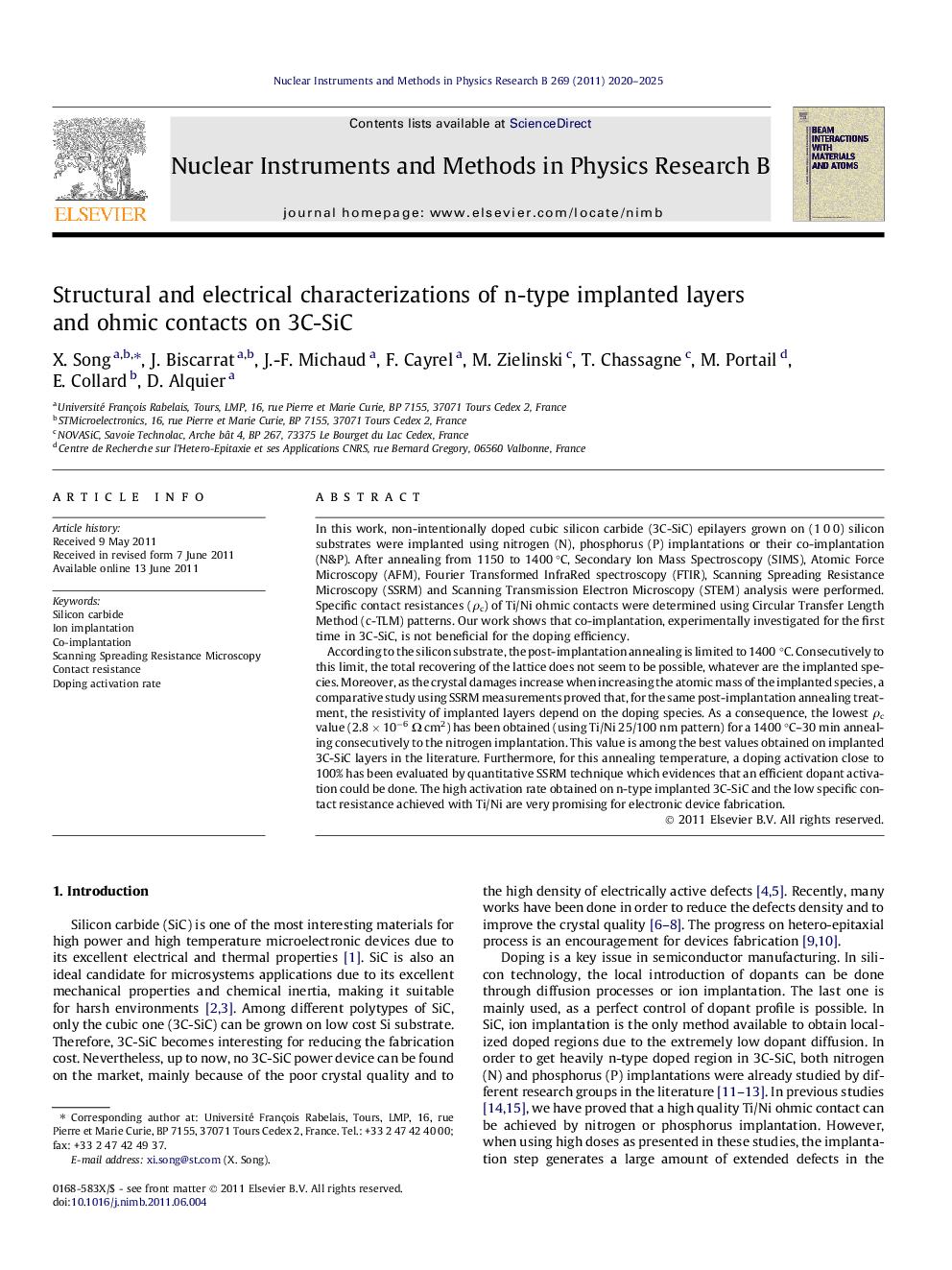| Article ID | Journal | Published Year | Pages | File Type |
|---|---|---|---|---|
| 1685613 | Nuclear Instruments and Methods in Physics Research Section B: Beam Interactions with Materials and Atoms | 2011 | 6 Pages |
In this work, non-intentionally doped cubic silicon carbide (3C-SiC) epilayers grown on (1 0 0) silicon substrates were implanted using nitrogen (N), phosphorus (P) implantations or their co-implantation (N&P). After annealing from 1150 to 1400 °C, Secondary Ion Mass Spectroscopy (SIMS), Atomic Force Microscopy (AFM), Fourier Transformed InfraRed spectroscopy (FTIR), Scanning Spreading Resistance Microscopy (SSRM) and Scanning Transmission Electron Microscopy (STEM) analysis were performed. Specific contact resistances (ρc) of Ti/Ni ohmic contacts were determined using Circular Transfer Length Method (c-TLM) patterns. Our work shows that co-implantation, experimentally investigated for the first time in 3C-SiC, is not beneficial for the doping efficiency.According to the silicon substrate, the post-implantation annealing is limited to 1400 °C. Consecutively to this limit, the total recovering of the lattice does not seem to be possible, whatever are the implanted species. Moreover, as the crystal damages increase when increasing the atomic mass of the implanted species, a comparative study using SSRM measurements proved that, for the same post-implantation annealing treatment, the resistivity of implanted layers depend on the doping species. As a consequence, the lowest ρc value (2.8 × 10−6 Ω cm2) has been obtained (using Ti/Ni 25/100 nm pattern) for a 1400 °C–30 min annealing consecutively to the nitrogen implantation. This value is among the best values obtained on implanted 3C-SiC layers in the literature. Furthermore, for this annealing temperature, a doping activation close to 100% has been evaluated by quantitative SSRM technique which evidences that an efficient dopant activation could be done. The high activation rate obtained on n-type implanted 3C-SiC and the low specific contact resistance achieved with Ti/Ni are very promising for electronic device fabrication.
► N, P and N&P co-implantation in 3C-SiC. ► Closed to 100% of activation for N implanted/annealed sample at 1400 °C. ► Low surface roughness (<5 nm) after annealing by using carbon protective layer. ► Ultra-low SCR (2.6 × 10−6 Ω cm2) with Ti/Ni contact on N implanted/annealed sample.
